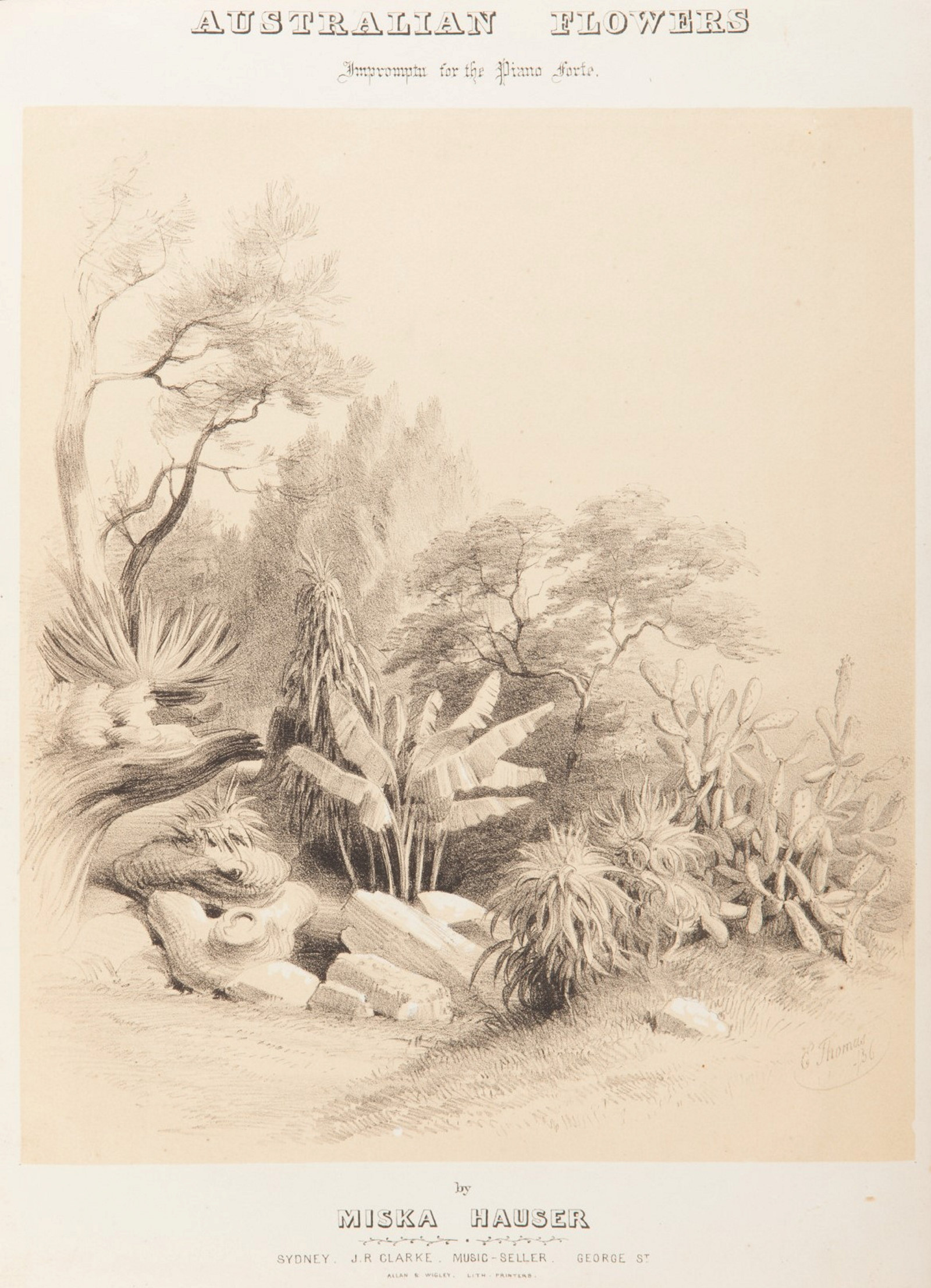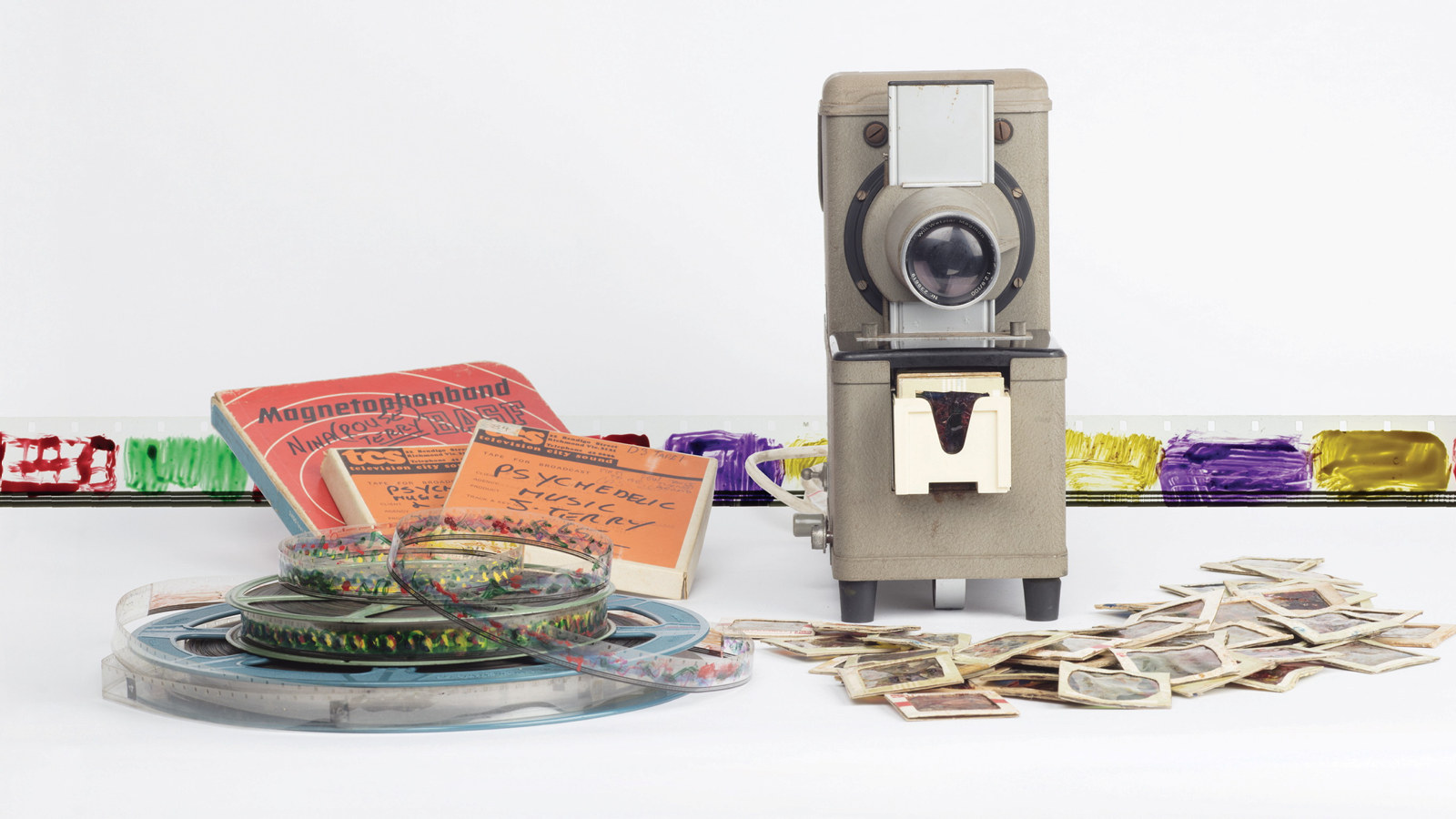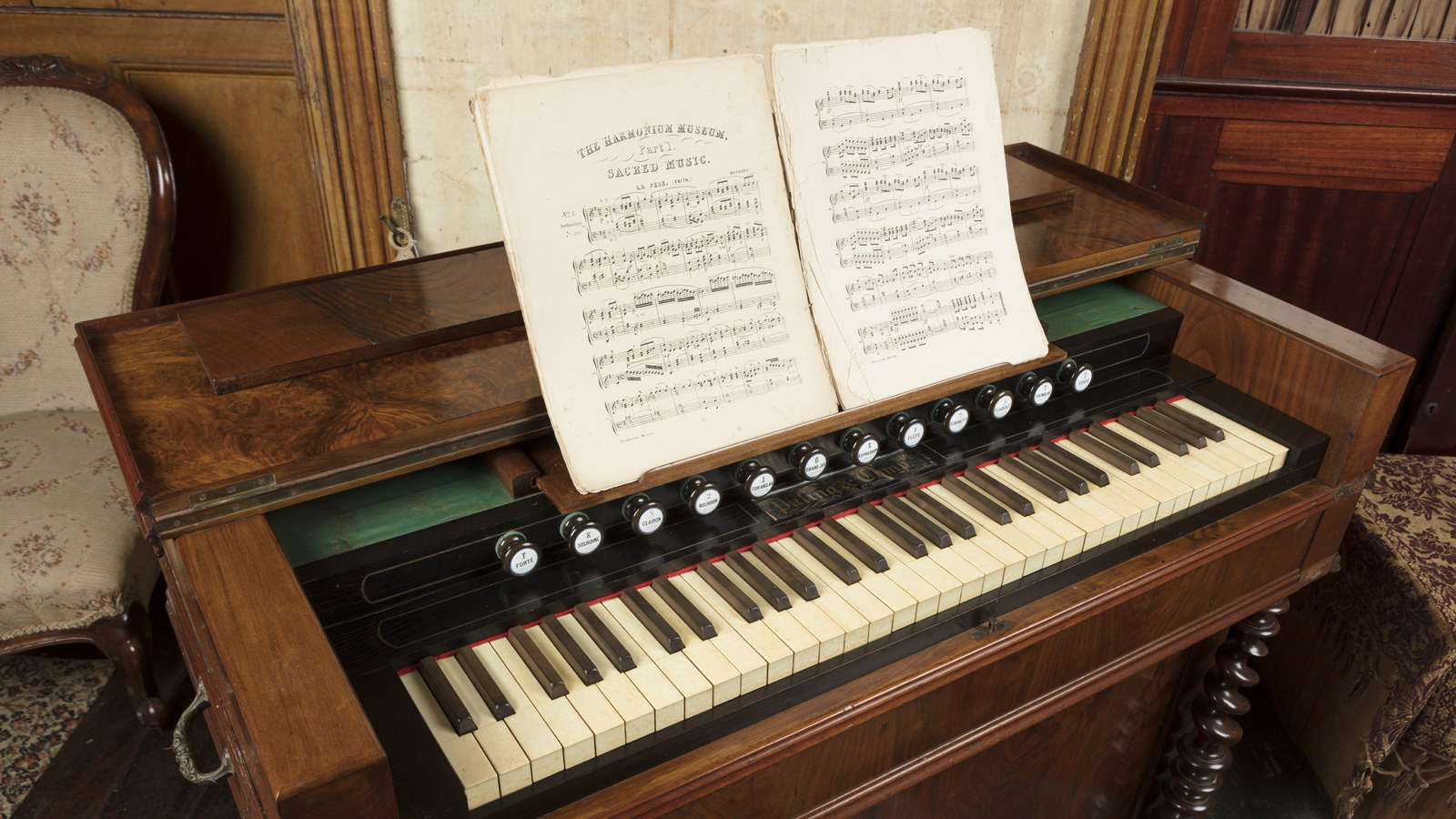A paper jukebox: exploring our sheet music collections
Musicologist Dr Graeme Skinner reflects on the historical and cultural significance of the sheet music collections belonging to three of Museums of History NSW’s historic properties.
The sheet music collections from Rouse Hill Estate, Meroogal, in Nowra, and Throsby Park, in Moss Vale - now located at the Caroline Simpson Library & Research Collection - offer a fascinating insight into the domestic music culture of colonial NSW. While only a small number of the works in these collections are unique Australian compositions, together they form an archive of enormous value to musical, historical and cultural scholarship both here and internationally.
As family collections of considerable size and scope, curated over two or more generations, and still largely complete, the collections present a more vivid and nuanced sampling of musical taste and practice in the colonial era than do many of the scattered survivals located in the national and state libraries’ collections. Knowing who owned the music and when it was acquired adds significantly to its cultural value, and it’s fortunate that several of the original owners regularly noted their names and dates of purchase on the covers. Occasional pencil markings on the music itself provide important evidence of performance.
Cherished collectables
Almost all the works are in small-scale format: musical miniatures for either solo piano or voice and piano. Typically printed editions five to seven pages long, the earliest have simple engraved title pages, while more decorative and colourful lithographic covers appeared in the 1850s. When the owners had collected 20 or 30 of these individual prints, they usually had them professionally bound into albums.
The Rouse Hill Estate collection is the largest and most historically significant, its earliest bound albums containing music from the 1810s to the 1840s. The eight large albums in the Throsby Park collection contain music collected by the Throsby family during the 1850s and 1860s. Meroogal’s is a later, smaller and more haphazard collection, with no bound albums, but is a valuable record of the lively musical life of a country town family. As well as purchasing sheet music, people also borrowed it from friends to make handwritten copies, and all three collections contain several such transcriptions.
With their inclusions and omissions, the collections are invaluable as a window on tastes and fashions of the era, on music as cherished and practised, and on business and personal relationships.
Dr Graeme Skinner
Looking for Australian music
The collections consist largely of British (and, to a much lesser and later extent, European) printed sheet music, most of which was almost certainly imported by and purchased from NSW retailers. Popular sheet music prints by London publishers were imported into Australia in large numbers during the 1830s and 1840s. By the 1840s, Sydney music printers had begun to issue pirated local editions of imported titles.
The earliest editions of genuinely Australian musical compositions were also printed in Britain. One recently uncovered example of Indigenous Australian music, ‘A New-South-Wales song’, was published in Britain in the first decade of the 19th century. The first surviving example of an Australian settler musical composition is ‘Currency lasses’, published in London in the early 1830s but composed in Sydney.
The Rouse Hill Estate collection includes a copy of one of the first anthologies of Sydney composers’ works, music publisher Jacob Clarke’s Australian musical album for 1857. It features songs and piano music by Edward Boulanger, Miska Hauser, Stephen and Henry Marsh, William Stanley and Frederick Ellard. However, the Rouse Hill Estate copy remains in pristine condition, apparently seldom opened, disappointingly suggesting a lack of interest in the music itself.
One Sydney composer whose music did interest these families was Lewis Lavenu (1818–1859). Lavenu came to Australia in 1853 to be musical director for touring Irish singer Catherine Hayes, and stayed on to conduct opera and oratorio. Both the Throsby and Rouse Hill Estate families bought, and used, copies of his ballads ‘My Molly Asthore’ (popularised by Hayes) and ‘I cannot sing to night’ (composed for Lavenu’s pupil the Australian soprano Marie Carandini).
From Balfe to Beethoven
Domestic music in early colonial Australia was the province of the voice and the ‘pianoforte’, and so too – almost exclusively – are the Rouse Hill Estate and Throsby collections. Most of the earlier songs had migrated to the drawing room from the theatre, while many of the solo piano pieces consist of arrangements of popular dance forms such as quadrilles, polkas, schottisches, gallops and waltzes. From the 1840s to the late 1860s, the collections include songs and ballads from the London operas of Henry Bishop, William Vincent Wallace and Michael Balfe; songs by Samuel Lover, John Blockley and Stephen Glover; and dance music by Louis Jullien and Charles d’Albert. Continental ‘classical’ repertoire includes opera songs by Weber, Bellini, Donizetti, and, by the late 1850s, Verdi; as well as piano music by Henri Herz, G A Osborne, and (notably in the Rouse Hill Estate collection) Thalberg.
Irish and Scots traditional music are among the ethnic repertoires represented. African-American music also found its way to Australia (and into the MHNSW collections) from the 1830s, in the form of ‘Jim Crow’ songs and ‘Ethiopian melodies’. It wasn’t until well into the 1860s that German classical music – now considered canonical – began to have a noticeable impact on these collections. Two of the earliest pieces by Beethoven and Schubert that appeared in Sydney concert programs – respectively ‘Adelaïde’ (regularly sung in the 1850s) and ‘The Erl King’ (first performed publicly in 1845) – have entered the Rouse Hill Estate and Throsby collections by the early 1860s.
With their inclusions and omissions, the collections are invaluable as a window on tastes and fashions of the era, on music as cherished and practised, and on business and personal relationships. Every piece has a story to tell, linking composers, publishers, importers, retailers, owners and performers in an intricate historical web.
About the author
Dr Graeme Skinner
University of Sydney
Graeme Skinner is an Australian musical historian, and an honorary associate in musicology at Sydney Conservatorium of Music, University of Sydney, and has worked with MHNSW on its colonial music collections since 2011.He is author of the biography Peter Sculthorpe: the making of an Australian composer (UNSW Press; ebook 2015).In his regularly updated research website, Austral harmony, he documents the musical history of Australia's colonial and early Federation eras, and curates a complementary virtual archive of Australian colonial music resources and user tags inside Trove. With co-author Michael Noone, he is also completing a catalogue of the plainsong and polyphonic choir books of Toledo Cathedral, Spain.
Published on
Related
![Owner bound volume of assorted songs, in the collection of Rouse Hill House & Farm, 1850-1864. [music]](https://images.slm.com.au/fotoweb/embed/2023/10/615fb53b45ca4bfb8d979b01993be8c3.jpg)
‘Home! Sweet Home!’
It may come as a surprise that the expression ‘home, sweet home’ originates from a song title

'Australian Flowers'
Given that much of the music played in Australia in the 19th century had been imported, one might ask what constituted an ‘Australian’ piece of music?

1960s psychedelia at Rouse Hill House
In a short experimental period of music making, the talented young John Terry combined radical musical ideas with abstract imagery and the soundscape of Rouse Hill House

An unassuming instrument
By delving into an old harmonium at Rouse Hill House & Farm we hope to learn when it came into the house, who played it, and how we can best look after it